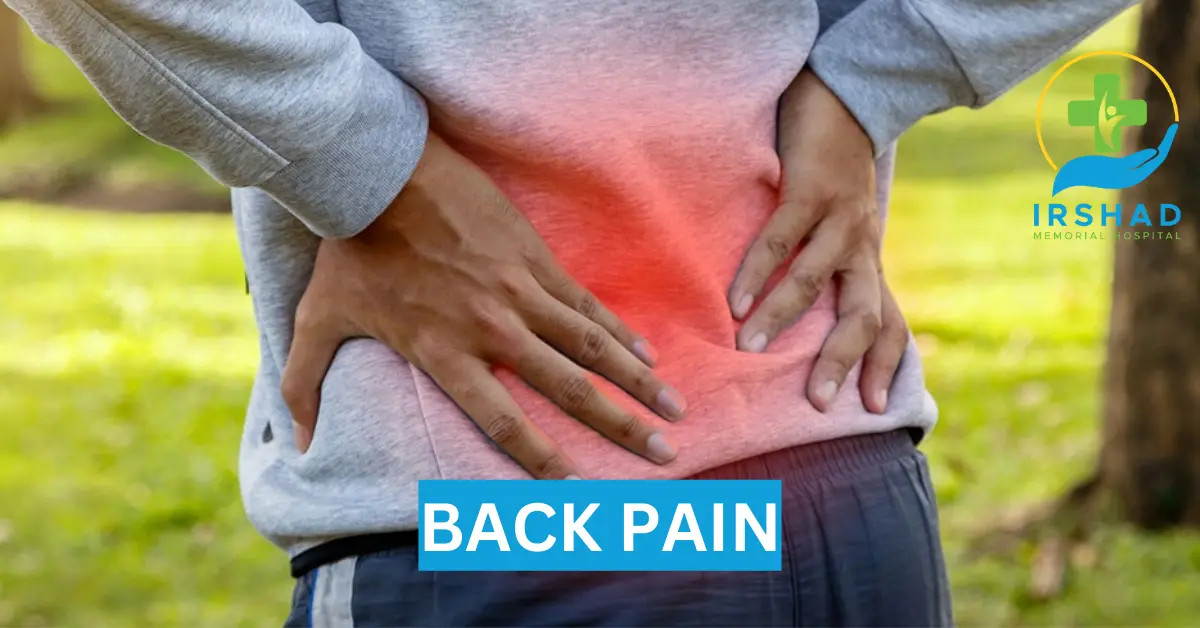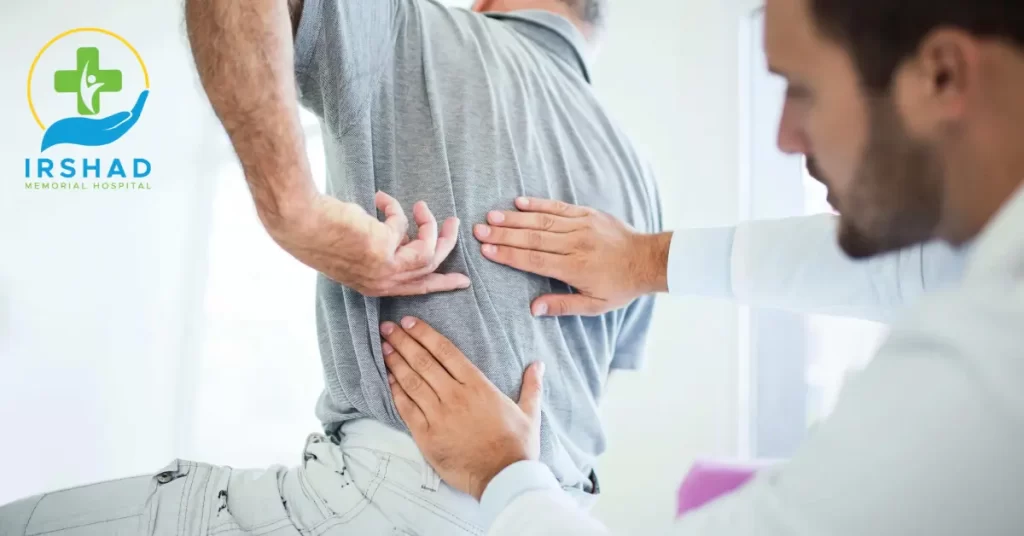
Back pain is a common discomfort that many people experience at some point in their lives. It can range from a dull ache to sharp, persistent pain, impacting the lower, middle, or upper parts of the spine. Back pain can result from various factors, including poor posture, muscle strain, injuries, or underlying health conditions. Lifestyle choices, such as lack of exercise, obesity, and smoking, can also contribute to its occurrence.
Understanding the causes and adopting preventive measures, such as maintaining proper posture, staying active, and seeking timely medical advice, can play a crucial role in managing and preventing pain in backbone. This introduction sets the stage for exploring the complexities and solutions related to this prevalent and often disruptive issue.
What Is Back Pain
Back pain is a common discomfort affecting the lower, middle, or upper part of the spine. It can range from a dull, persistent ache to a sharp, shooting pain and may be caused by various factors. Poor posture, muscle strain, and injury are common culprits. The spine’s complex structure, comprised of bones, muscles, and ligaments, can be vulnerable to stress and strain.
Sedentry lifestyles, heavy lifting, and obesity can contribute to pain in your back. Additionally, conditions like herniated discs, arthritis, and spinal disorders may cause chronic discomfort. Maintaining a healthy lifestyle, regular exercise, and proper body mechanics can help prevent and alleviate back pain. If persistent or severe, it’s advisable to seek medical attention for a proper diagnosis and tailored treatment plan.
Who experiences back pain?
Back pain can affect people of all ages and backgrounds, making it a widespread issue. It is most commonly experienced by adults, particularly those between 30 and 60 years old. Sedentary lifestyles, poor posture, and a lack of exercise contribute to back pain in many individuals. Occupations involving heavy lifting or prolonged sitting can also increase the risk.
Pregnant women often experience back pain due to the extra weight and changes in posture. Athletes and physically active individuals may encounter back pain from sports-related injuries or overexertion. Additionally, factors like obesity, stress, and underlying health conditions can contribute to discomfort. While back pain is prevalent, adopting a healthy lifestyle, maintaining good posture, and staying physically active can help reduce the risk and alleviate symptoms for many people.
Diagram of muscles in lower back
The lower back muscles, also known as the lumbar muscles, play a crucial role in supporting the spine and facilitating various movements. Key muscles in this region include the erector spinae, multifidus, and quadratus lumborum.
The erector spinae muscles run along the spine and help maintain an upright posture. The multifidus muscles, situated deep along the spine, provide stability and support for individual vertebrae during movements. The quadratus lumborum muscles, located on each side of the spine, assist in activities like bending and twisting.

Visualizing these muscles can be conceptualized as layers along the spine, with the erector spinae on the surface, the multifidus beneath it, and the quadratus lumborum extending from the pelvis to the lower ribcage. Strengthening and stretching exercises for these muscles are essential for maintaining a healthy lower back and preventing discomfort.
Back pain home remedies
Home remedies can provide relief for mild back pain. Applying a cold or hot compress to the affected area can help reduce inflammation and soothe discomfort. Gentle stretching exercises, such as knee-to-chest stretches or cat-cow yoga poses, can alleviate muscle tension. Maintaining good posture and using ergonomic furniture while sitting can prevent strain. Over-the-counter pain relievers like ibuprofen or acetaminophen can also be effective.
Regular exercise, especially activities that strengthen the core muscles, can contribute to overall back health. Adequate rest and a supportive mattress are essential for recovery. Additionally, practicing stress-reducing techniques like deep breathing or meditation can ease tension. If the pain persists or worsens, it’s important to consult with a healthcare professional for a proper diagnosis and personalized treatment plan.
Back pain treatment
Treating back pain often involves a combination of lifestyle adjustments and medical interventions. For mild cases, rest and over-the-counter pain relievers like ibuprofen can offer relief. Applying cold or hot packs to the affected area can reduce inflammation and soothe muscles. Gentle exercises, focusing on stretching and strengthening the back and core muscles, contribute to long-term recovery.
In more severe cases or persistent pain, professional medical assistance may be necessary. Physical therapy, chiropractic care, or massage can provide targeted relief. In some instances, prescription medications or injections may be recommended to manage pain and inflammation. Surgery is typically reserved for cases of severe injury or conditions that don’t respond to other treatments.
Back pain causes

Back pain can be caused by various factors. Poor posture, often linked to prolonged sitting or standing, can strain the muscles and lead to discomfort. Muscle or ligament strains due to sudden movements or heavy lifting contribute to acute pain. Age-related issues like degenerative disc disease or arthritis can affect the spine over time.
Herniated discs, where the soft inner material of a spinal disc protrudes, may put pressure on nerves, causing pain. Injuries from accidents or falls can result in back pain. Certain medical conditions, like osteoporosis or scoliosis, may also contribute. Lifestyle factors such as obesity, a lack of exercise, and smoking can increase the risk. Identifying the specific cause is crucial for effective treatment, highlighting the importance of consulting with a healthcare professional for proper diagnosis and management.
Back pain symptoms
Back pain manifests with various symptoms that can range from mild discomfort to severe limitations. Common symptoms include persistent aching or stiffness in the lower, middle, or upper back. Sharp or shooting pain may radiate down the legs or arms, indicating nerve involvement. Muscle spasms and tightness can contribute to the overall discomfort.
Reduced flexibility and limited range of motion are often observed, impacting daily activities. Sometimes, back pain is accompanied by tingling or numbness in the extremities. Pain may worsen with certain movements or positions, such as bending or sitting for extended periods of time. In chronic cases, fatigue and sleep disturbances can result from persistent discomfort. Identifying these symptoms and their patterns is crucial for accurate diagnosis and appropriate management, underscoring the importance of seeking medical attention for persistent or severe back pain.
Back pain diagnosis
Diagnosing back pain involves a comprehensive approach. Healthcare professionals begin by discussing the patient’s medical history and conducting a physical examination to assess symptoms, range of motion, and any signs of nerve involvement. Imaging studies like X-rays, MRIs, or CT scans may be recommended to visualize the spine and identify structural issues such as herniated discs or fractures.
Blood tests can help rule out certain medical conditions contributing to back pain. In some cases, diagnostic injections may be used to pinpoint the source of pain. Patient collaboration through open communication about symptoms and lifestyle factors is crucial for an accurate diagnosis. Once the underlying cause is identified, a tailored treatment plan can be developed to address the specific issues contributing to back pain, promoting effective and targeted relief.
How to prevent back pain
Preventing back pain involves adopting healthy habits and mindful practices. Maintain good posture when sitting, standing, and lifting to reduce strain on the spine. Engage in regular exercise, focusing on activities that strengthen core muscles, such as walking or swimming. Take breaks during prolonged periods of sitting or standing to stretch and change positions.
Use ergonomic furniture and ensure a supportive mattress for proper back alignment. Lift objects by bending at the knees and keeping them close to your body. Maintain a healthy weight through a balanced diet and regular physical activity to alleviate stress on the spine. Practice stress-reducing activities like deep breathing and relaxation techniques. Quitting smoking can also contribute to overall spine health. By incorporating these simple habits into daily life, one can significantly reduce the risk of developing back pain.
Risk factors for back pain

Several factors contribute to the risk of developing back pain. Poor posture, especially during activities like sitting or standing for extended periods, can strain the back muscles. Lack of regular exercise and physical fitness weakens the supporting muscles of the spine, increasing vulnerability. Excess body weight places additional stress on the spine and can lead to discomfort.
Occupations involving heavy lifting, repetitive movements, or prolonged sitting contribute to the risk. Smoking is associated with a higher incidence of back pain, as it may impede blood flow to spinal tissues. Age-related changes, such as degenerative disc disease, also play a role. Individuals with a history of back injury or certain medical conditions are more susceptible. Identifying and mitigating these risk factors through lifestyle adjustments and preventive measures can help reduce the likelihood of experiencing back pain.
Back pain and pregnancy
Back pain is common during pregnancy due to changes in the body. As the baby grows, the increased weight can strain the back muscles and alter the spine’s curvature. Hormonal changes, like the release of relaxin, can loosen ligaments, leading to instability and discomfort. The shift in the center of gravity may cause poor posture and back strain.
To alleviate pregnancy-related back pain, women can practice gentle exercises like prenatal yoga and pelvic tilts. Using proper body mechanics, such as bending at the knees when lifting, can help prevent strain. Applying heat or cold packs and using supportive pillows can also offer relief. It’s essential for pregnant individuals to consult with healthcare providers for safe and tailored approaches to managing back pain during this period.
Exercises to help your back pain
Engaging in specific exercises can help alleviate back pain and strengthen the supporting muscles. Gentle activities like walking or swimming promote overall fitness and flexibility. Pelvic tilts, where you lie on your back and gently rock your pelvis, can stretch and strengthen the lower back muscles.
Core-strengthening exercises, such as leg raises or modified planks, contribute to spinal stability. Cat-Cow stretches from yoga can enhance flexibility and reduce tension. Bridge exercises, involving lifting the hips off the ground, target the lower back and glutes. Regular stretching routines, including hamstring and hip flexor stretches, can also provide relief. It’s crucial to start slowly, listen to your body, and consult with a healthcare professional or a qualified fitness instructor to ensure the exercises are suitable for your specific condition.
Back pain from UTI
- Connection: Back pain can be associated with a urinary tract infection (UTI).
- Infection Spread: UTIs can migrate to the kidneys, causing discomfort in the lower back.
- Symptoms: Back pain from a UTI may be accompanied by other urinary symptoms like a frequent urge to urinate, pain or burning during urination, and cloudy or strong-smelling urine.
- Inflammation: Infection-induced inflammation in the urinary tract can affect surrounding tissues, leading to back pain.
- Seek Medical Attention: If experiencing back pain along with
- Treatment: Antibiotics prescribed for the UTI can also help alleviate back pain by addressing the underlying infection.
- Hydration: Drinking plenty of water can support UTI recovery and contribute to overall back health.

